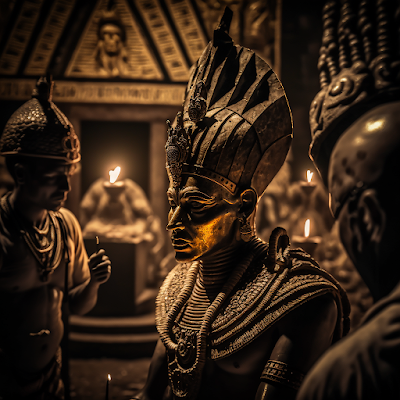The Mysterious Death of King Richard III
Introduction
The Mysterious Death of King Richard III is a significant event in the history of England that marked the end of the Plantagenet dynasty and the beginning of the Tudor dynasty. The circumstances surrounding Richard's death have been the subject of much debate and speculation for centuries. In this blog post, we will explore the details of the Battle of Bosworth Field and the events leading up to Richard's death.
The Battle of Bosworth Field
The Battle of Bosworth Field was fought on August 22, 1485, between the forces of King Richard III and the army of Henry Tudor, who was claiming the throne as the Lancastrian heir. The battle was the decisive battle in the Wars of the Roses, a series of civil wars fought between the House of Lancaster and the House of York for control of the English throne.
Richard's Death
Richard fought bravely, leading his troops into battle and personally engaging in hand-to-hand combat. However, the tide of battle turned against him when one of his key allies, the Duke of Norfolk, was killed early in the fighting. This caused Richard's army to lose momentum and begin to falter. In the midst of the confusion, Richard himself was killed, possibly by a blow to the head from a halberd.
The exact details of Richard's death are not known for certain, as the accounts of the battle are conflicting and often contradictory. Some sources claim that he was killed while fighting bravely in the thick of battle, while others suggest that he was killed while trying to flee the battlefield. Some even suggest that he was killed by Henry Tudor himself, although there is no concrete evidence to support this claim.
Richard's Legacy
Richard's death was a turning point in English history. The Battle of Bosworth Field marked the end of the Wars of the Roses and the beginning of the Tudor dynasty, which would rule England for the next century and a half. Richard's body was reportedly found by a Welshman named Rhys ap Thomas, who is said to have stripped the king of his armor and sent his corpse to Leicester, where it was put on public display.
The discovery of Richard's remains
In 2012, Richard's remains were discovered under a parking lot in Leicester, England, after a team of researchers launched a search based on historical records. The remains were exhumed, and DNA testing confirmed that they belonged to Richard III. The king's remains were then reinterred in Leicester Cathedral in 2015.
Conclusion
The death of King Richard III at the Battle of Bosworth Field in 1485 marked the end of the Plantagenet dynasty and the beginning of the Tudor dynasty. Despite the fact that the exact details of his death are not known for certain, it is clear that he died in battle, fighting for his claim to the English throne. His death was a turning point in English history, marking the end of the Middle Ages and the beginning of the modern era. The discovery of his remains in 2012 and their reinterment in Leicester Cathedral in 2015 serves as a testament to his enduring legacy in English history.












Comments
Post a Comment